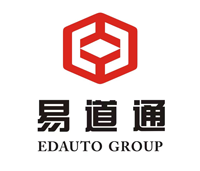In recent years, China’s new energy vehicle industry has experienced rapid development and has become an important player in the global electric vehicle market. According to the latest market data and industry analysis, China has not only achieved remarkable achievements in the domestic market, but also demonstrated strong competitiveness in the international market. This article will explore the current situation, challenges and future development trends of China’s new energy vehicle exports from multiple perspectives.
1. The rapid rise of China’s new energy vehicle industry
The rise of China’s new energy vehicle industry can be traced back to 2010, when the country introduced a series of policies to promote the development of electric vehicles. With the continuous advancement of technology and the increase in market demand, Chinese electric vehicle manufacturers such as BYD, NIO, and Xpeng have rapidly emerged and become important players in the global electric vehicle market.
According to the China Association of Automobile Manufacturers, China’s sales of new energy vehicles reached 6.8 million in 2022, accounting for nearly 60% of global electric vehicle sales. This figure not only reflects China’s leadership in the field of electric vehicles, but also shows its strong capabilities in technological innovation and market promotion.
2. Expansion of export markets
As the domestic market gradually becomes saturated, Chinese new energy vehicle manufacturers are beginning to turn their attention to the international market. According to data from the General Administration of Customs, China’s new energy vehicle exports reached 500,000 units in 2022, a year-on-year increase of 120%. This growth is mainly due to the following factors:
(1) Technological advantages: China’s new energy vehicles have made significant progress in battery technology, intelligence, and autonomous driving. For example, BYD’s blade battery has excellent performance in safety and endurance, attracting many international customers.
(2) Price competitiveness: The price of China’s new energy vehicles is relatively low and can meet the needs of different consumers. For consumers in many international markets, price is an important consideration when choosing electric vehicles.
(3)Policy support: The Chinese government has provided policy support for the export of new energy vehicles, including tax exemptions and export subsidies, etc. These policies have effectively reduced the operating costs of enterprises and enhanced their international competitiveness.
3. Analysis of major export markets
China’s new energy vehicle export markets are mainly concentrated in Europe, Southeast Asia, South America and other regions.
(1) European market: As European countries pay more and more attention to environmental protection policies, the demand for electric vehicles continues to rise. Chinese manufacturers such as Weilai and Xiaopeng have performed particularly well in the European market, especially in countries such as Norway, Germany and France. Weilai’s successful listing in Norway marks the increasing recognition of Chinese electric vehicle brands in the European market.
(2) Southeast Asian market: Southeast Asian countries such as Thailand and Indonesia have also become important export markets for China’s new energy vehicles. The governments of these countries actively promote the popularization of electric vehicles and provide a good market environment. BYD’s electric bus project in Thailand has been successful, further consolidating its position in the Southeast Asian market.
(3) South American market: The demand for electric vehicles in the South American market is also gradually increasing. Chinese new energy vehicle manufacturers have gradually opened up markets in countries such as Brazil and Argentina by cooperating with local companies.
IV. Challenges
Although China’s new energy vehicles have made remarkable achievements in the international market, they still face some challenges:
(1)Brand awareness: Although Chinese new energy vehicles have advantages in technology and price, in some developed countries, consumers’ awareness of Chinese brands is still low. How to enhance brand image and consumer trust is a problem that Chinese companies need to solve.
(2)International trade barriers: Some countries have set higher tariffs and technical standards for imported electric vehicles, which poses certain obstacles to the export of Chinese new energy vehicles. Chinese companies need to actively respond to these trade barriers and find appropriate market entry strategies.
(3)Differences in technical standards: Different countries have different technical standards and safety requirements for electric vehicles. Chinese companies need to make corresponding adjustments and improvements based on the requirements of the target market.
V. Future Development Trends
Looking ahead, China’s new energy vehicle export prospects remain broad. As the world pays more attention to sustainable development, the market demand for electric vehicles will continue to grow. Chinese companies can further expand their international markets in the following ways:
(1)Strengthen technological innovation: Continue to increase R&D investment to improve battery technology, intelligence level and autonomous driving capabilities to meet the high standards of the international market.
(2)Establish a global supply chain: By setting up production bases and R&D centers overseas, we can reduce production costs, improve market response speed, and enhance international competitiveness.
(3)Enhance brand image: Increase the brand’s international visibility and increase consumer trust by participating in international exhibitions, sponsoring sports events, etc.
(4) Actively respond to policy changes: Pay close attention to policy changes in the international market and flexibly adjust market strategies to cope with possible trade barriers and differences in technical standards.
Email:edautogroup@hotmail.com
Phone / WhatsApp:+8613299020000
Post time: May-26-2025


